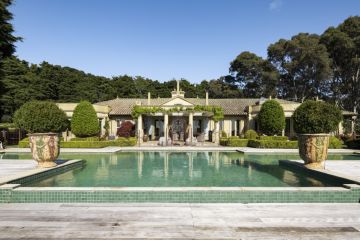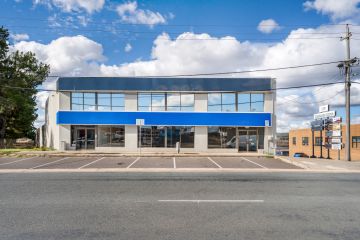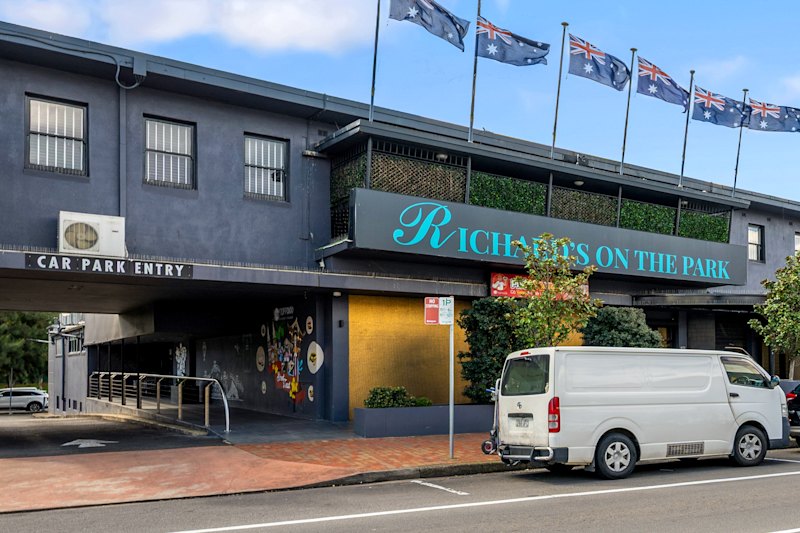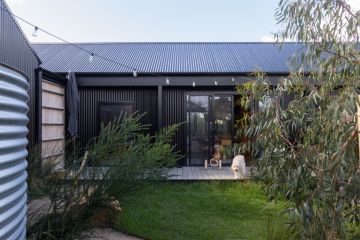Inside the Batemans Bay shipping container house by architect Matt Elkan

Demonstrating that the repurposing of the ubiquitous shipping container as residential is more than a passing fad is this inventive and pleasing holiday house in a hinterland village on the south coast near Batemans Bay.
It redeploys four containers into a three-bedroom house, with a fourth detached out-the-back that serves as a grandparental guest suite.
Sydney architect Matt Elkan credits an environmentally passionate, Canberra-based client, Simon Byrne, as “driving the principles I was reacting to. The house is the embodiment of Simon’s ideas about addressing problems of affordability and sustainability”.
In the small edge-of-township subdivision, the structural arrangement that steps down the block, places the containers lightly on the site in an L-shaped configuration that is squared off under a broad-brimmed, thickly insulated roof that extends high over a return front verandah.
The whole was completed for a beyond-belief small budget.
“I said yes to a budget constraint that was a big part of the brief,” Elkan says. The spend of $350,000 “was about a third of the cost of other new houses I’ve done”.
While several other architects shied from the commission, Elkan saw being pushed around by such limited funds “as a positive”. For coast builder Luke Price, who finessed utilitarian base metal into such finely crafted residential alchemy, it was a bonus, too. He won an HIA Custom Build award last year in the extreme low-cost home category.
- Related: Nine designer homewares you can afford now
- Related: Interior designer Brett Mickan’s colourful renovation
- Related: The Victorian cottage where pets come first
So where does employing a ‘name’ architect on such an unpretentious project show up?
It’s there in the way the three, six-plus metre (20 foot) and one 12-metre (40-foot)-long containers have been set together and then extended to flow in and out of each other via interstices or connecting corridor spaces. It’s there in the way the sides and ends of the containers have been opened; and in the way “we wrapped the whole thing so that externally it reads more like a conventional house”.
Where he’d initially thought the fat, metallic wall corrugations would make for noisy interiors, Elkan discovered they deflected sound. The white paint job made them look quite lush, and the custom-made, recycled hardwood windows “that are heavy as lead, also feel very luxurious”. The window and door furniture counteracts the structural ply that lines the spaces outside the container walls.
“At $20 a square metre, the ply was another big win”, he is happy to report.
We recommend
We thought you might like
States
Capital Cities
Capital Cities - Rentals
Popular Areas
Allhomes
More







